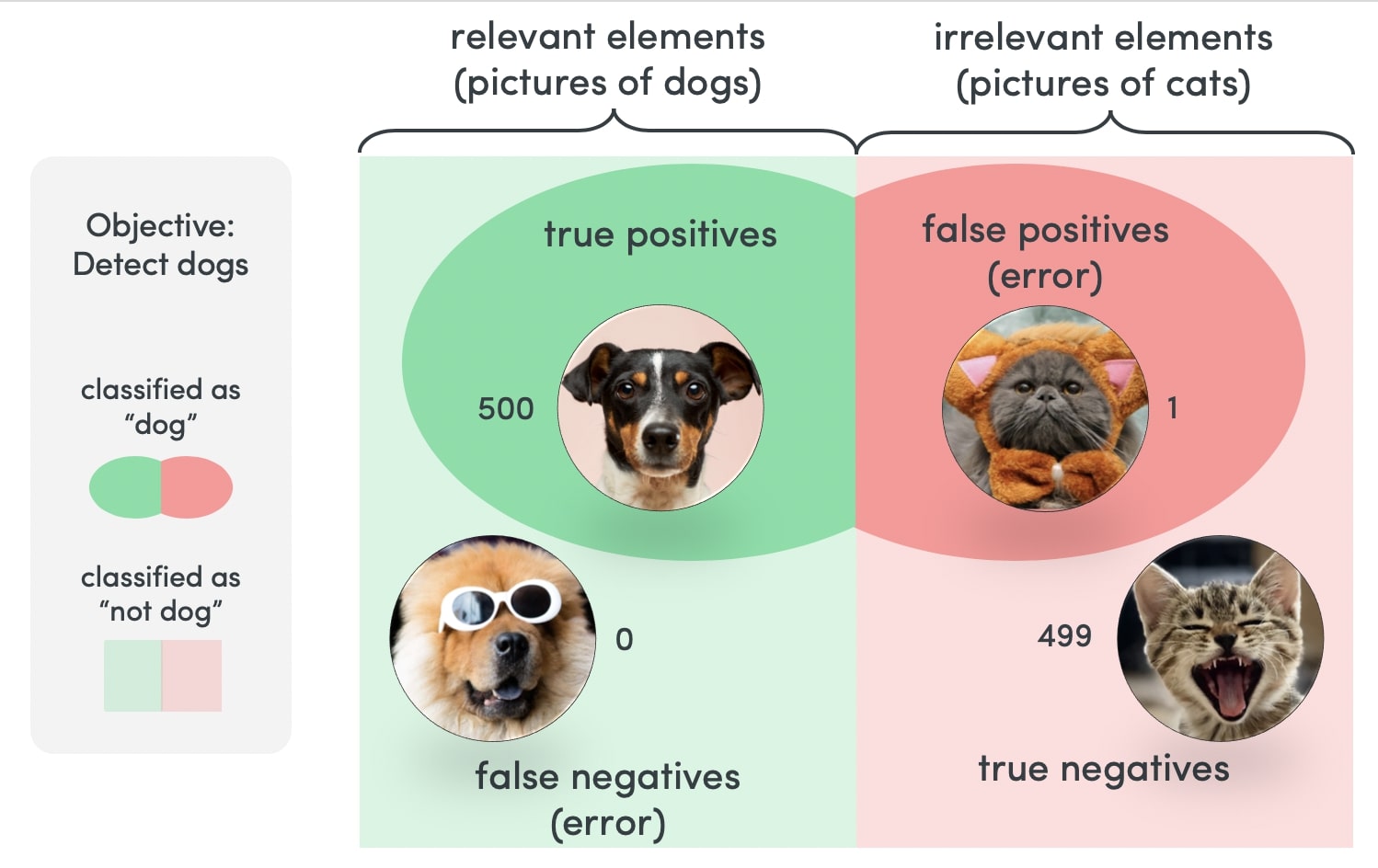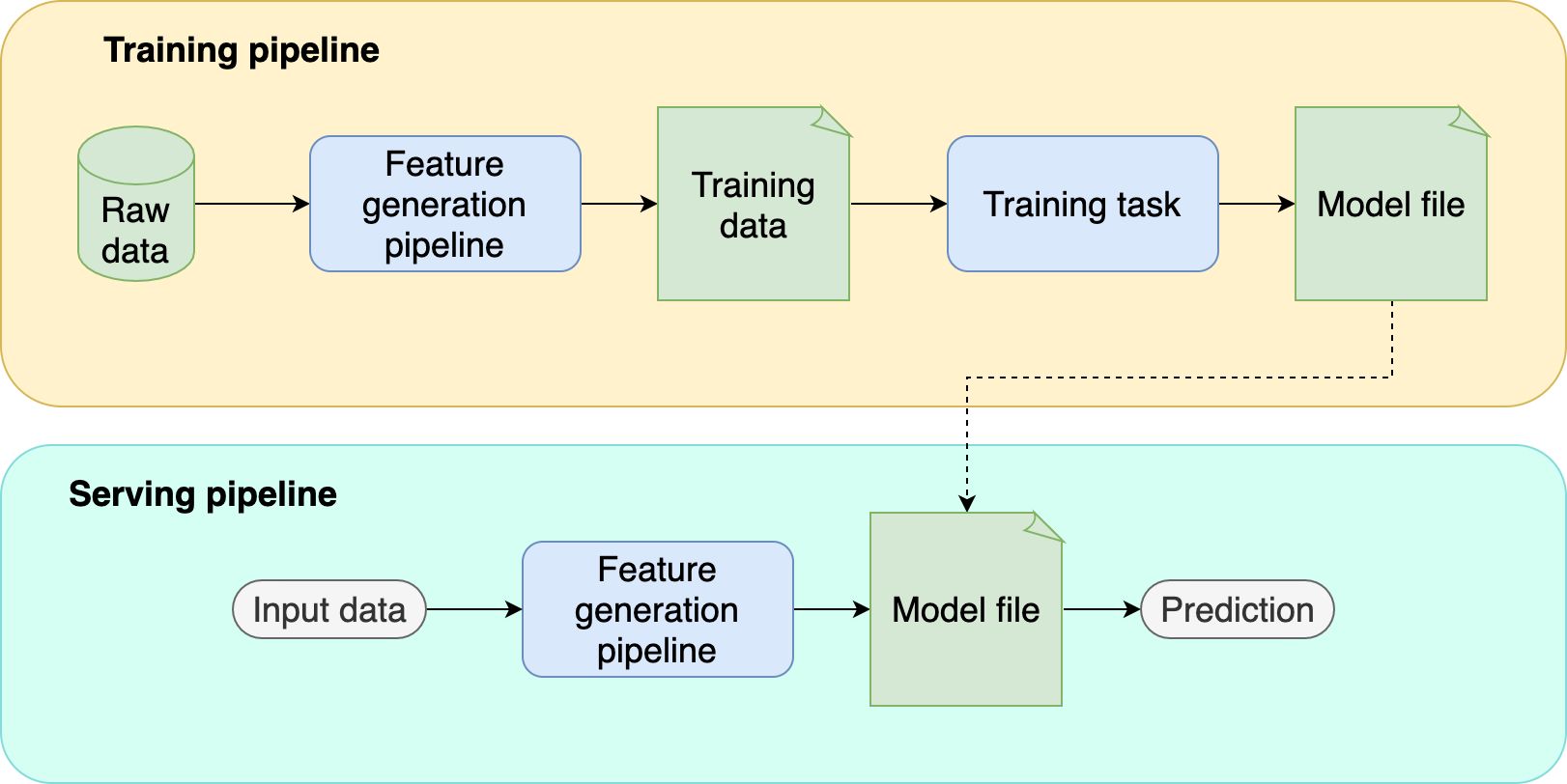Introduction
Machine learning algorithms have proven to be powerful tools for extracting insights and making predictions from large datasets. However, their effectiveness heavily relies on the availability of high-quality training data. In many cases, obtaining sufficient real-world data that accurately represents the problem domain can be challenging due to privacy concerns, data scarcity, or the need for specialized expertise.
This is where synthetic data comes into play. Synthetic data refers to artificially generated data that closely resembles real data in terms of its statistical properties and characteristics. It offers a viable solution to bridge the gap between limited or inaccessible real-world data and the requirements of machine learning models.
By leveraging synthetic data, machine learning practitioners can train and fine-tune algorithms in a controlled and scalable manner. This enables them to overcome data limitations and improve the robustness and generalization of their models.
However, generating synthetic data for machine learning is not a trivial task. It requires a deep understanding of the target dataset, domain knowledge, and the application of specialized techniques and algorithms. In this article, we will explore the reasons for using synthetic data in machine learning, the different techniques and approaches for generating synthetic data, and best practices for ensuring its quality and effectiveness.
Through this exploration, we aim to provide a comprehensive understanding of synthetic data generation in the context of machine learning and enable practitioners to utilize this powerful tool to enhance their machine learning workflows.
Why Use Synthetic Data for Machine Learning?
Obtaining enough high-quality training data is a fundamental requirement for developing successful machine learning models. However, there are several challenges that can hinder the availability of sufficient real-world data. This is where synthetic data proves to be invaluable in the field of machine learning.
1. Data Scarcity: In certain domains, acquiring large amounts of real data can be challenging due to cost or time constraints. Synthetic data generation allows researchers and practitioners to artificially expand their dataset, creating a larger and more diverse set of training examples.
2. Data Privacy: In many cases, real data is sensitive or private, making it difficult to share or access for machine learning purposes. Synthetic data can be generated to mimic the statistical properties of the original data without revealing any personally identifiable information (PII), allowing for safe and compliant sharing of data.
3. Data Variability: Real-world data might not always cover the full range of possible scenarios, leading to biased or incomplete models. Synthetic data generation techniques enable the creation of additional data points that span different variations, increasing the generalization and robustness of machine learning models.
4. Data Annotations: In certain tasks, such as image or text classification, obtaining accurate and detailed annotations for real data can be time-consuming and expensive. Synthetic data can be generated with predefined labels or annotations, making it easier and more cost-effective to train machine learning models.
5. Data Augmentation: Synthetic data can be used to enhance the existing real data by introducing additional samples with synthetic variations, such as realistic distortions, perturbations, or transformations. This technique, known as data augmentation, helps to increase the diversity and richness of the training data, leading to improved model performance.
Overall, synthetic data offers a practical and efficient solution to overcome the challenges posed by data scarcity, privacy concerns, limited variability, and the need for annotated data. By generating synthetic data, machine learning practitioners can significantly enhance the quality, quantity, and diversity of training data, resulting in more accurate and reliable machine learning models.
How Does Synthetic Data Generation Work?
Synthetic data generation involves creating artificial data that simulates the statistical properties and characteristics of real data. This process typically follows a set of techniques and algorithms designed to generate data points that closely resemble real-world examples. Here are the key steps involved in synthetic data generation:
1. Data Understanding: The first step in synthetic data generation is to gain a deep understanding of the target dataset and its underlying statistical properties. This involves analyzing the data distributions, correlations, and relationships among variables.
2. Modeling Approach: Based on the understanding of the data, a modeling approach is chosen. There are several techniques and algorithms available for generating synthetic data, including data augmentation, generative adversarial networks (GANs), variational autoencoders (VAEs), rule-based approaches, and simulations-based data generation.
3. Model Training: In techniques like GANs and VAEs, the model is trained on the real data to learn the underlying patterns and structures. The model is then used to generate new synthetic data points that closely resemble the distribution of the real data.
4. Data Generation: Once the model is trained, synthetic data points are generated by feeding random noise or latent vectors into the model. The model then applies the learned patterns to generate novel data points that mimic the statistical properties of the real data.
5. Data Validation: It is important to validate the generated synthetic data to ensure its quality and reliability. This involves comparing the statistical properties of the synthetic data with those of the real data and performing sanity checks to evaluate the similarity and consistency between the two datasets.
6. Iterative Refinement: Synthetic data generation is an iterative process. It may involve tweaking the model training parameters, adjusting the data generation process, or incorporating feedback from domain experts to improve the quality and relevance of the synthetic data.
By following these steps, machine learning practitioners can generate synthetic data that closely resembles the characteristics of real data. This allows them to overcome data limitations, privacy concerns, and variability issues, enabling more effective training and evaluation of machine learning algorithms.
Popular Techniques for Generating Synthetic Data
There are several popular techniques and algorithms used for generating synthetic data. These techniques aim to create data points that closely mimic the statistical properties and characteristics of real data. Let’s explore some of the most common techniques:
1. Data Augmentation: Data augmentation involves applying various transformations and perturbations to existing real data to generate new synthetic examples. Common augmentation techniques include rotation, scaling, flipping, and adding noise or distortions. Data augmentation is especially effective in computer vision tasks and can significantly increase the diversity and variability of the training data.
2. Generative Adversarial Networks (GANs): GANs consist of two main components: a generator and a discriminator. The generator generates synthetic data examples from random noise, while the discriminator serves as a critic that tries to distinguish between real and synthetic data. The generator and discriminator are trained in a competitive manner, with the goal of continually improving the quality of the generated synthetic data until it becomes indistinguishable from real data. GANs have shown remarkable success in generating realistic images, text, and other types of data.
3. Variational Autoencoders (VAEs): VAEs are generative models that learn a low-dimensional latent space representation of the data. They consist of an encoder that maps real data into the latent space and a decoder that reconstructs the original data from the latent space. By sampling points in the latent space, VAEs can generate new synthetic data points that closely resemble real data. VAEs are particularly effective for generating complex data such as images and text.
4. Rule-Based Approaches: Rule-based approaches involve manually specifying a set of rules or constraints that govern the generation of synthetic data. These rules are based on domain knowledge and can ensure that the synthetic data aligns with specific requirements and characteristics. For example, in healthcare, rule-based approaches can be used to generate synthetic patient records that comply with privacy regulations while retaining the statistical properties of real patient data.
5. Simulations and Simulations-Based Data Generation: Simulations involve creating virtual environments or models that simulate real-world phenomena. These simulations can generate synthetic data by simulating the behavior of complex systems or processes. For example, in autonomous vehicle research, simulations can be used to generate synthetic sensor data, such as images or lidar readings, to train and test machine learning models.
These techniques provide a range of options for generating high-quality synthetic data. Each technique has its own advantages and limitations, and the choice of technique depends on the nature of the data, the problem domain, and the specific requirements of the machine learning task. By leveraging these techniques, machine learning practitioners can generate synthetic data that facilitates more robust and accurate model training and evaluation.
Data Augmentation
Data augmentation is a popular technique used to generate synthetic data by applying various transformations and perturbations to existing real data. The goal is to create new synthetic examples that expand the diversity and variability of the dataset, leading to improved model performance and generalization.
Data augmentation is widely used in computer vision tasks such as image classification, object detection, and segmentation. Some common transformations used in data augmentation include:
- Rotation: Rotating an image by a certain angle to simulate different viewing perspectives.
- Scaling: Increasing or decreasing the size of an image to simulate different distances or zoom levels.
- Flipping: Mirroring an image horizontally or vertically to create variations.
- Cropping: Selecting a smaller region of an image to focus on specific details.
- Adding Noise: Introducing random variations or distortions to simulate real-world noise.
- Changing Brightness/Contrast: Adjusting the brightness or contrast levels of an image to mimic different lighting conditions.
Data augmentation is not limited to image data; it can also be applied to other types of data, such as text and time series. For example, in natural language processing, text data augmentation techniques include word replacement, synonym insertion, and sentence paraphrasing.
The key advantage of data augmentation is that it increases the size of the training dataset without requiring additional real-world data collection. This is especially beneficial when the available real data is limited or imbalanced. By artificially expanding the dataset, data augmentation allows the model to learn from a more diverse set of examples, helping to reduce overfitting and improve model performance.
It’s important to note that data augmentation should be applied in a way that preserves the semantic integrity of the data. For example, in image classification, flipping an image horizontally is a valid augmentation technique as the object’s identity and features remain unchanged. However, changing the label of an image during augmentation would introduce incorrect information.
Data augmentation should also take into account the domain-specific characteristics and constraints. For example, in medical imaging, certain transformations may not be appropriate due to ethical or safety concerns.
Overall, data augmentation is a powerful technique for generating synthetic data that increases the diversity and variability of the training dataset. By leveraging data augmentation, machine learning practitioners can improve the robustness and generalization of their models, leading to more accurate and reliable predictions.
Generative Adversarial Networks (GANs)
Generative Adversarial Networks (GANs) are a powerful class of generative models used for generating synthetic data. GANs consist of two main components: a generator and a discriminator. The generator generates synthetic data examples from random noise, while the discriminator serves as a critic that tries to distinguish between real and synthetic data.
The training process involves a continual competition between the generator and the discriminator, with the goal of improving the quality of the generated synthetic data. Here is how GANs work:
- Initialization: The generator and discriminator are initialized with random weights.
- Data Training: The discriminator is trained on real data samples, learning to differentiate between real and synthetic data.
- Data Generation: The generator generates synthetic data samples by transforming random noise into realistic-looking data points.
- Adversarial Training: The generator’s synthetic samples are passed to the discriminator, which tries to accurately classify them as real or synthetic. The generator updates its parameters to generate samples that fool the discriminator.
- Iterations: Steps 3 and 4 are repeated for multiple iterations, with the generator progressively learning to generate synthetic data that becomes indistinguishable from real data.
One of the key strengths of GANs is their ability to capture the complex underlying distribution of the training data. The generator becomes adept at producing data points that closely resemble the real data, while the discriminator becomes more challenging to fool. As a result, GANs have achieved impressive results in generating realistic images, text, and even sound.
GANs have been applied to a wide range of applications, including image synthesis, style transfer, text generation, and anomaly detection. They have revolutionized the field of computer vision and have proven to be effective in scenarios where traditional data generation methods may fall short.
However, training GANs can be challenging. It requires careful tuning of hyperparameters, balancing the training dynamics between the generator and discriminator, and handling issues such as mode collapse and vanishing gradients. Researchers continue to explore new variations and improvements to GANs to overcome these challenges.
Despite the challenges, GANs offer a powerful approach to generating synthetic data that closely resembles real data. Armed with GANs, machine learning practitioners can create realistic and diverse synthetic data that enhances the training process and opens up new possibilities for developing innovative machine learning models and applications.
Variational Autoencoders (VAEs)
Variational Autoencoders (VAEs) are generative models that learn a lower-dimensional latent space representation of the data. VAEs consist of an encoder, a decoder, and a loss function that encourages both reconstruction accuracy and latent space regularization.
Here’s how VAEs work:
- Encoding: The encoder takes an input data point and maps it to a lower-dimensional latent space representation. This latent vector encodes the essential features and characteristics of the input data.
- Latent Space Regularization: VAEs introduce a regularization term that encourages the latent vector to follow a predefined prior distribution, typically a Gaussian distribution. This regularization term helps to smooth and regularize the latent space, making it easier to generate meaningful and diverse data points.
- Decoding: The decoder takes the latent vector and reconstructs the original input data from it. The decoder learns to generate synthetic data that closely resembles the training data by mapping the latent space back to the original data space.
- Sampling: VAEs can generate new synthetic data points by sampling points from the latent space according to the prior distribution. The decoder then maps these sampled latent vectors to the original data space, producing diverse synthetic samples.
Unlike GANs, which focus on generating realistic samples by adversarially training the generator against a discriminator, VAEs prioritize learning the underlying distribution of the data. This allows VAEs to generate samples that may not be as photorealistic as GANs but have more controlled and interpretable properties.
VAEs have proven to be effective in generating various types of data, including images, text, and even molecular structures. They have found applications in image synthesis, data completion, anomaly detection, and many other domains.
One of the advantages of VAEs is their ability to generate new data points by sampling from the latent space. By varying the latent vector, machine learning practitioners can explore the manifold of possible data points, allowing for controlled generation of synthetic data.
However, training VAEs can be challenging due to the variational inference process and the trade-off between reconstruction accuracy and latent space regularization. Proper balancing of the reconstruction loss and the regularization term is necessary to ensure the model learns meaningful representations.
Despite the challenges, VAEs offer a powerful technique for generating synthetic data that captures the underlying distribution and variations of real data. By leveraging VAEs, machine learning practitioners can create diverse and interpretable synthetic data that can enhance algorithmic creativity and enable new possibilities in machine learning applications.
Rule-Based Approaches
Rule-based approaches are a technique for generating synthetic data by specifying a set of rules or constraints that govern the generation process. These rules are based on domain knowledge and can ensure that the synthetic data aligns with specific requirements and characteristics.
Unlike other generative models, which learn from existing data to create new examples, rule-based approaches are deterministic. This means that the generated synthetic data follows explicit rules and does not rely on probabilistic modeling.
Rule-based approaches can be particularly useful in domains where there are well-defined and specific guidelines for data generation. Here are some examples of rule-based data generation:
- Data Privacy: In industries with strict privacy regulations, such as healthcare or finance, rule-based approaches can be used to generate synthetic data that preserves privacy while maintaining the statistical properties of the real data. The generated data must adhere to rules that remove or obfuscate personally identifiable information (PII).
- Sampling Constraints: In scenarios where certain sampling constraints need to be enforced, such as in surveys or simulations, rule-based approaches can ensure that the synthetic data follows those constraints. For example, in a survey about age distribution, the generated data must follow the specific age ranges and distribution determined by the rules.
- Domain-specific Constraints: In some domains, synthetic data needs to align with specific features or requirements. For instance, in structural engineering, synthetic data for testing algorithms may need to satisfy structural stability or load-bearing constraints defined by domain experts.
The benefit of rule-based approaches is that they allow for precise control over the generated data. Since the rules are explicitly defined, the generated data can align with specific domain requirements and constraints, providing a higher degree of customization and control.
However, developing rule-based approaches can be labor-intensive and may require deep domain expertise. Constructing accurate rules and ensuring that the generated data accurately represents the desired characteristics is crucial.
Despite the challenges, rule-based approaches offer a valuable method for generating synthetic data that conforms to specific guidelines and constraints. By leveraging rule-based generation techniques, machine learning practitioners can produce synthetic data that maintains privacy, satisfies sampling requirements, and aligns with domain-specific characteristics.
Simulations and Simulations-Based Data Generation
Simulations and simulations-based data generation involve creating virtual environments or models that simulate real-world phenomena. These techniques are particularly useful in situations where it is difficult or impractical to collect real data or to create synthetic data using other methods.
Simulations involve modeling the behavior of complex systems or processes based on scientific principles and domain knowledge. By running simulations, synthetic data can be generated that closely represents the characteristics and patterns observed in real data.
Simulations-based data generation has several advantages:
- Data Availability: Simulations provide access to a vast amount of data that may not be readily available in real-world scenarios. For example, in the field of astrophysics, simulations can generate synthetic data of celestial objects and galactic structures, allowing researchers to study phenomena beyond the reach of observational data.
- Controlled Experiments: Simulations enable researchers to design controlled experiments by manipulating different variables and parameters. Synthetic data generated from these experiments can be used to evaluate the effects of specific changes, gain insights, and compare against real-world data.
- Data Diversity: Simulations offer the flexibility to generate data spanning a wide range of scenarios, enabling exploration of extreme or uncommon situations. This allows machine learning models to be trained on data that covers a broader spectrum of possibilities, improving their robustness and adaptability.
Simulations can be used in many domains, such as climate research, physics, chemistry, robotics, and finance. For example, in autonomous vehicles, simulations can generate synthetic sensor data, such as images or lidar readings, to train and test machine learning models without the need for physically collecting data on the road.
Although simulations-based data generation can provide valuable synthetic data, there are also limitations to consider. Simulations rely on assumptions and simplifications, which means the generated data may not perfectly mirror all nuances of real-world data. Validation and calibration against real data is crucial to ensure the generated data aligns with the observed phenomena.
Simulations-based data generation requires expertise in the domain being simulated and knowledge of the underlying physics or rules governing the system. Careful design and implementation of the simulation environment and consideration of potential biases or limitations are essential for generating high-quality synthetic data.
Overall, simulations and simulations-based data generation offer a powerful approach to generate synthetic data that can represent complex systems and scenarios. By leveraging simulations, researchers and practitioners can obtain large amounts of diverse and controlled synthetic data, enabling them to explore and study phenomena that may not be feasible or accessible in real-world data collection.
Evaluating the Quality of Synthetic Data
Evaluating the quality of synthetic data is crucial to ensure that it effectively represents the real data and can be used to train reliable and accurate machine learning models. Here are some key aspects to consider when assessing the quality of synthetic data:
- Statistical Properties: One of the primary objectives of synthetic data generation is to mimic the statistical properties of the real data. Evaluating the statistical properties involves comparing the distributions, correlations, and other statistical measures between the synthetic and real data. If the synthetic data closely aligns with the real data in terms of these properties, it suggests higher quality.
- Data Completeness: Ensuring that the synthetic data captures the full range of variations present in the real data is essential. This includes verifying that the synthetic data covers diverse scenarios, different classes or categories, and any rare or outlier cases. The synthetic data should adequately represent the complexities and patterns of the real data.
- Data Consistency: Consistency refers to the coherence and reliability of the synthetic data. It involves checking for logical and semantic consistency of the generated data, ensuring that it adheres to any domain-specific rules or constraints. Inconsistencies such as contradictory information or unrealistic patterns can indicate lower quality synthetic data.
- Domain Expert Feedback: Involving domain experts in evaluating the synthetic data is beneficial. They can provide insights and feedback based on their knowledge of the domain, identifying any discrepancies, biases, or missing aspects in the synthetic data that may affect its quality and relevance.
- Impact on Model Performance: Ultimately, the quality of the synthetic data can be assessed by the impact it has on the performance of machine learning models. It is important to conduct rigorous experiments and evaluations to determine if the models trained on the synthetic data achieve comparable or competitive results to models trained on real data.
Evaluating the quality of synthetic data is an ongoing process. It may involve iterative refinement, incorporating feedback and validation from domain experts, and validating the synthetic data against new real data to ensure its continued reliability and relevance.
Ensuring the quality of synthetic data is essential for its effective utilization in machine learning. High-quality synthetic data can enhance the performance, generalization, and robustness of machine learning models, leading to more accurate predictions and better overall results.
Best Practices for Generating Synthetic Data
Generating high-quality synthetic data requires careful consideration and adherence to best practices. Here are some key guidelines to follow when generating synthetic data:
- Understand the Data and Problem: Gain a deep understanding of the target dataset, including its structure, patterns, and characteristics. Identify the specific requirements and challenges of the problem you are addressing with synthetic data generation.
- Preserve Data Privacy: If working with sensitive or proprietary data, follow privacy regulations and guidelines to ensure the synthetic data does not compromise privacy or reveal confidential information. Apply techniques such as anonymization or obfuscation to protect the privacy of individuals or entities.
- Domain Knowledge and Expertise: Involve domain experts who possess in-depth understanding of the data, its context, and any specific guidelines or constraints. Their input can help guide the data generation process and assess the quality and relevance of the synthetic data.
- Iterative Approach: Synthetic data generation is an iterative process. Refine and improve the models and techniques based on feedback, validation, and evaluation. Continually evaluate the quality and effectiveness of the generated synthetic data.
- Validate Against Real Data: Perform rigorous validation and comparison of the synthetic data against real data. Assess the statistical properties, distributions, and correlations to ensure they align closely. If available, incorporate validation from real-world scenarios or controlled experiments to assess the realism and effectiveness of the synthetic data.
- Data Diversity: Aim to generate synthetic data that covers a broad range of variations and encompasses different scenarios, classes, or categories. This improves the diversity and generalization capability of the synthetic data and leads to more robust machine learning models.
- Collaboration and Community: Engage with the community and collaborate with other experts in synthetic data generation to exchange ideas, share experiences, and benefit from collective knowledge. Stay updated with the latest research and advancements in the field.
- Document and Reproduce: Keep detailed documentation of the synthetic data generation process, including the techniques, algorithms, and preprocessing steps used. This documentation helps in reproducing the results, sharing the data, and ensuring transparency in the data generation process.
Adhering to these best practices can significantly enhance the quality and effectiveness of synthetic data generation. By following these guidelines, machine learning practitioners can generate synthetic data that closely resembles real data, addresses specific challenges, and enables the development of reliable and accurate machine learning models.
Benefits and Limitations of Using Synthetic Data
Using synthetic data in machine learning comes with numerous benefits, but it also has its limitations. Understanding these advantages and limitations is crucial for making informed decisions about leveraging synthetic data. Let’s explore the benefits and limitations:
Benefits:
- Data Availability: Synthetic data generation overcomes limitations in data availability, especially when real data is scarce, proprietary, or costly to collect. It enables the creation of larger and more diverse datasets, enhancing the training and evaluation of machine learning models.
- Data Diversity: Synthetic data generation allows for the creation of data that spans a wide range of variations and uncommon scenarios. This improves the generalization and robustness of machine learning models, enabling them to perform better in real-world situations.
- Data Privacy: Synthetic data can be generated to maintain the privacy of individuals and organizations, making it safe to use and share without violating privacy regulations. It allows for data collaboration and research while protecting sensitive information.
- Data Annotation: Synthetic data can incorporate predefined labels or annotations, reducing the costs and effort associated with manual data annotation. This makes it easier to train machine learning models that require a large amount of labeled data.
- Data Exploration: Synthetic data provides the opportunity to explore and understand the characteristics of a dataset. Researchers can manipulate synthetic data to analyze the effects of different parameters, features, or scenarios, gaining valuable insights into the underlying data distribution.
Limitations:
- Lack of Real-World Variability: While synthetic data can mimic real data to some extent, it may not capture the full complexity and variability of real-world scenarios. The lack of real-world nuances and unpredictable factors may limit the performance and generalization of machine learning models trained solely on synthetic data.
- Model Bias and Overfitting: Depending solely on synthetic data may introduce biases or unintentional patterns that are present in the generation process. This can lead to overfitting and models that fail to generalize well to real-world data.
- Data Quality Assurance: Evaluating and ensuring the quality of synthetic data can be a challenging task. It requires careful validation against real data and expertise in domain-specific characteristics and constraints. Inaccurate or flawed synthetic data may hinder the performance and reliability of machine learning models.
- Data Distribution Mismatch: Synthetic data generation relies on assumptions and models that may not perfectly match the underlying data distribution. If the generated synthetic data does not sufficiently resemble the real data distribution, it may negatively impact the performance of machine learning models.
- Domain Expertise and Model Interpretability: Generating meaningful and domain-specific synthetic data often requires expert knowledge and deep understanding of the problem domain. It may also pose challenges in interpreting machine learning models trained on synthetic data, as they may not align with the real-world insights and explainability.
Understanding the benefits and limitations of using synthetic data aids in making informed decisions about its application. By carefully considering these factors, machine learning practitioners can harness the benefits of synthetic data while mitigating its limitations, leading to more effective and reliable machine learning outcomes.
Use Cases for Synthetic Data in Machine Learning
Synthetic data has numerous applications in machine learning, offering valuable solutions in various domains. Let’s explore some of the common use cases:
Data Augmentation: One of the primary use cases for synthetic data is data augmentation. By applying transformations and perturbations to existing real data, synthetic data can expand the training dataset, improve model generalization, and mitigate overfitting. Data augmentation is particularly effective in computer vision tasks such as image classification, object detection, and segmentation.
Data Privacy and Security: Synthetic data addresses concerns regarding data privacy and security. In industries where privacy regulations are stringent, such as healthcare or finance, synthetic data allows for data sharing and collaboration without compromising sensitive or proprietary information. It facilitates the development and testing of machine learning models on representative data while protecting individual privacy.
Insufficient Real-World Data: Generating synthetic data becomes crucial when real-world data is limited or challenging to obtain. In domains where data collection is expensive, time-consuming, or logistically difficult, synthetic data generation techniques enable the creation of larger and more diverse datasets. This is particularly useful in fields such as autonomous driving, robotics, or rare diseases research.
Data Imbalance: Synthetic data can tackle the issue of imbalanced datasets, where certain classes or categories are underrepresented. By generating synthetic examples for minority classes or rare occurrences, synthetic data can balance the dataset distribution and improve model performance, ensuring fair representation and more accurate predictions.
Data Anonymization and Anomaly Detection: Synthetic data aids in preserving data anonymity and facilitating anomaly detection. By generating synthetic representations of the data, it is possible to detect and analyze unusual patterns or anomalies in the dataset. Synthetic data provides realistic scenarios for benchmarking anomaly detection algorithms while protecting sensitive information.
Data Generation for Simulation or Testing: Simulations and simulations-based data generation are utilized in fields where real data collection is impractical, dangerous, or costly. Synthetic data enables the creation of artificial scenarios for testing and simulation purposes. This is relevant in industries like aerospace, healthcare, and gaming, where synthetic data mimics real-world conditions and provides training and validation data for machine learning models.
Data Generation for Training Adversarial Models: Synthetic data plays a crucial role in training adversarial models such as generative adversarial networks (GANs). By generating synthetic data samples, GANs enable the training of models that can create realistic text, images, or other types of data, which can be used in a range of applications including art, entertainment, and content generation.
These use cases demonstrate the versatility and value of synthetic data in machine learning. By leveraging synthetic data generation techniques, practitioners can overcome data limitations, enhance model performance, preserve privacy, and enable innovative applications in numerous domains.
Conclusion
Synthetic data generation is a powerful tool in the field of machine learning, offering solutions to various challenges associated with real-world data. By mimicking the statistical properties and characteristics of real data, synthetic data enables researchers and practitioners to overcome limitations such as data scarcity, privacy concerns, and data variability.
Throughout this article, we explored the benefits and limitations of using synthetic data in machine learning. We discussed techniques such as data augmentation, generative adversarial networks (GANs), variational autoencoders (VAEs), rule-based approaches, and simulations-based data generation. Each technique offers unique advantages and considerations, allowing for the generation of high-quality synthetic data that can enhance model training and evaluation.
Evaluating the quality of synthetic data is crucial to ensure its effectiveness in representing the real data. By assessing statistical properties, data completeness and consistency, and incorporating domain expert feedback, practitioners can ensure the reliability and relevance of the synthetic data.
Best practices play a vital role in synthetic data generation, including understanding the data and problem, preserving data privacy, utilizing domain knowledge, and validating against real data. By following these best practices, practitioners can generate synthetic data that aligns closely with the real data distribution and improves the performance of machine learning models.
Synthetic data finds application in various use cases, such as data augmentation, data privacy, addressing data scarcity, balancing data distribution, enabling simulations and testing, and training adversarial models. These use cases demonstrate the wide-ranging benefits and applications of synthetic data in machine learning.
Overall, synthetic data generation is a valuable technique that empowers machine learning practitioners to address data limitations, enhance model performance, and make meaningful advancements in their respective fields. Through continuous advancements in synthetic data generation techniques and rigorous evaluation, synthetic data can continue to play a crucial role in driving innovation and progress in machine learning and related disciplines.

























